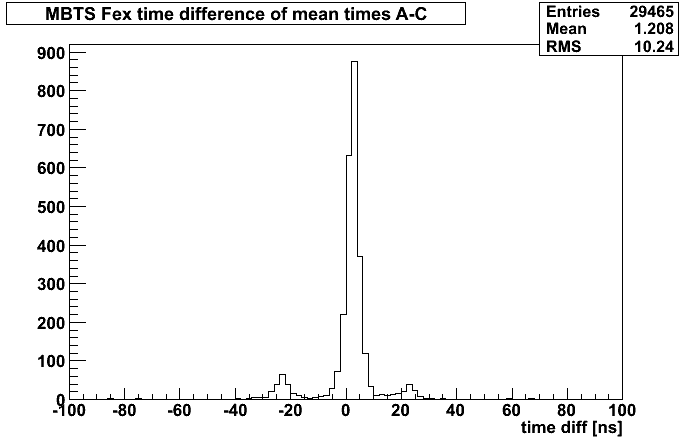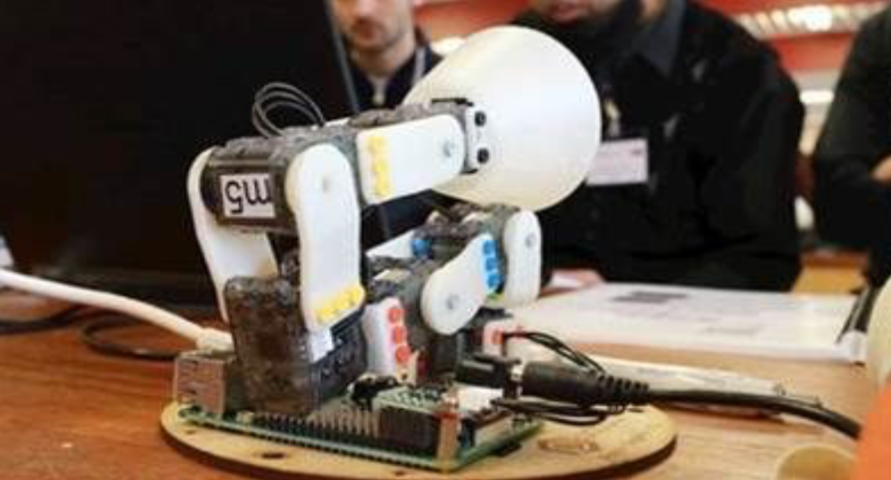3 Firsts for ATLAS in 2010
15 March 2010 | By
It has been a BUSY weekend! The LHC has been working around the clock get the machine commissioned, and ATLAS has been enjoying the many Firsts that have resulted. On Friday morning they began to turn the machine back on. By 14:00, CERN time, beam was back in the LHC. By 21:00 the LHC started to ramp the beams to 1180 GeV per beam, from 450 GeV (injection energy). The ramp finished at 21:10. This was the first time in 2010 that the LHC had accelerated protons to above injection energy. This is the first of 3 Firsts this past weekend.
Then on Saturday, after many hours of beam studies and measurements by the LHC, they decided to go for high intensity bunches. Until now, the LHC had been dealing with "probe" bunches. These are single bunches (one per beam) of about 5x10^9 protons per bunch. At this intensity, if the beam accidentally runs into a detector or piece of equipment, the damage will be minimal and probably won't hurt anything. After many hours or careful studying and checking and rechecking, the LHC decided to go for the higher intensity. At 18:05, the LHC injected a second bunch (behind the probe bunch) for beam 2 with an intensity of 4x10^10 protons. This is the first time that high intensity beam has been in the LHC in 2010. This is the second of 3 Firsts. They continued to play around with measurements and tunes, and orbits with high intensity bunches for several hours; learning as much as they can about the new beam dynamics.
Finally, on Sunday, the LHC planned to perform more studies of ramped beam. I was particularly lucky to be the shift leader during this shift. At around noon, the LHC had started preparing for ramp, meaning they could start the ramp at any moment. At 12:30, the LHC started to ramp its beams to 1180 GeV. By 12:38 the ramp had completed. Only 8 minutes to ramp from 450 GeV to 1180 GeV. This time, though, the beams were much better off, having lifetimes of at least 90 hours. The LHC had performed many studies and measurements at this high energy. Taking advantage of the stable beams.

Then at 14:26 the LHC did something that we had not quite anticipated, though in hind-sight it is almost obvious. You see, the LHC had been purposefully keeping the beams separated from each other at the interaction points so that they do not ruin the beam lifetimes. In order to do their commissioning they need clean, stable, long lived beams. But when they had done all they wanted to do with the ramped beams they finally need to check how the beams react when they come closer at the interaction points. So at approximately 14:26 the LHC turned off the separator magnets at Point 1 (our separator magnets) making the beams begin to cross in the center of ATLAS. We began to see collisions! The third of 3 Firsts. At first I saw some activity in our Event Viewers which were streaming events from our minimum bias triggered events. Then I looked at the LHC elog and saw that they turned off our separator magnets. Then I talked to the trigger shifter and he confirmed that at 14:26 there was a distinct increase in our minimum bias trigger rate.

Then we looked at the minimum bias timing difference plots, and sure enough, there was a large peak near 0. Clear evidence of collisions. We were seeing the first ATLAS collisions of 2010! At that point I had to start calling some of the higher-ups in the ATLAS management.

Then at 15:10, LHC dumped the beams. They had finished their studies and needed to move on the next task on their ever shrinking list of things to do before physics. So as you can see, it was a very busy weekend for the LHC. They are moving pretty fast, and we can only be grateful for their good work.




